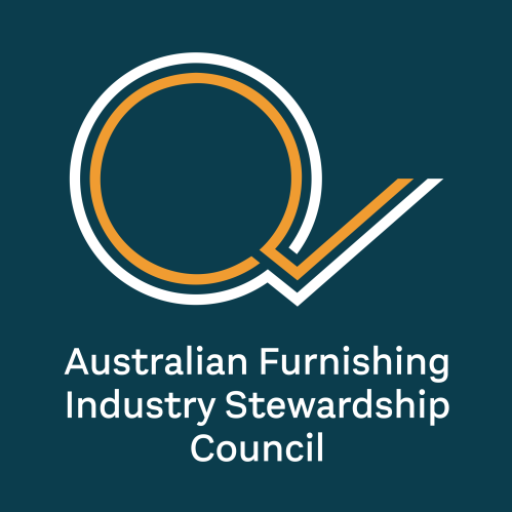The furniture, fittings and equipment (FF&E) industry has always cared about good design, comfort and safety. But in the last few years, the list of expectations has exploded.
Manufacturers are now being asked to prove that their products are safe, responsibly sourced, healthy for people, and low in carbon. That means meeting all sorts of certification and reporting standards. These take time, money and expertise to achieve.
And even when they do all that hard work, many local manufacturers still find themselves undercut by cheap imports or “fast furniture” that don’t meet the same standards but slip through on price. It’s a frustrating spot to be in. But things are changing, and there’s a growing opportunity for those who can show clear, credible performance data.
Why the Focus Is Shifting to Interiors
Until recently, most attention around carbon in buildings was focused on the exterior or “hard shell”, the steel, concrete, and glass that make up the structure. Now, attention is shifting inside.
Across a building’s life, repeated interior upgrades can rival the original structure for embodied carbon impact. Research by LMN Architects found that tenant fit-outs and furniture churn over 60 years can generate as much embodied carbon as the original structure.1
In Australia, typical office strip-outs produce about 63 tonnes of material per 1,000 square metres2. A grade fit outs refresh on roughly an 8.5 year cycle3, and about 400,000 square metres of Sydney CBD space are refitted each year4. Current recovery performance sits near 21% against a best practice ambition of 60 to 80%5.
In other words, what’s inside the building really matters.
As governments and regulatory organisations tighten reporting rules, big companies now have to measure and disclose the carbon of what they buy. This means they’re turning to their suppliers, including FF&E makers, for answers.
So if you supply into commercial, retail, education or government fit-outs, you’ll soon need to show carbon data and certification just to stay in the game.
Certification, a blessing and a burden
Most manufacturers already do the right things: quality inputs, controlled processes, safe chemistry. But proof has multiplied. You might carry FSC for timber or low-VOC finishes, GECA or Declare labels, evidence for Green Star and WELL. Each has its own datasets, audits, and renewal cycles. For a catalogue with variants and custom work, it can feel endless. This is where high quality, least cost carbon compliance with Rebuilt can create brain space and the required evidence for you to pursue the other sustainability and ESG certifications that matter to you.
Price, the real comparison
Price pressure is real. Fast furniture can look cheap at the invoice level, then lose on total cost once churn, repairs, replacements, and disposal are counted. Product Carbon Footprints (PCFs) help you change that conversation. When every SKU carries a clear kg CO₂e and sits alongside evidence for durability, warranty, repairability and take back, buyers can compare whole-life value, not just sticker price. The same data lets you price a base specification and a low-carbon alternative side by side, making the carbon delta and the cost delta obvious and defensible.
Time to verify, from weeks to minutes
Procurement teams want decisions they can file, quickly. You reduce time-to-yes when you put a one-page carbon report on the table in front of the quote, provide a simple project roll-up, and attach a standard evidence bundle, Declare, GECA, FSC, GREENGUARD or low VOC proof where indoor air, supply chain or Green Star points matters. When you use the Rebuilt platform your data is already on hand, your dashboard gives you draft estimates for pre-sale conversations. and then when you hit the sale, you can have that carbon verified in less than 2 weeks, so you never miss out and you are always putting your best numbers forward for verification.
Turning compliance into competitive advantage
Treat verification as protection against the race to the bottom. When your products are backed by PCFs for carbon, Declare for chemistry, GECA and FSC for sourcing, you give buyers confidence. Clear, consistent claims justify price, protect margin, and keep you in high spec projects. As public sector tenders and large corporates expand Scope 3 requirements, suppliers who surface decision-useful data early in the process win time, trust, and share.
How Rebuilt helps FF&E companies stay ahead
Rebuilt understands that FF&E is complex, with many components, finishes, and variants, with sustainability questions often land early, often before a sale is confirmed. We make this practical.
Rebuilt lets you measure embodied carbon at the product and project level, quickly and accurately, produce verification-ready outputs without hiring consultants for every line, and manage evidence once so it can be reused across multiple certifications and client requests.
In short, we help you meet growing compliance demands at the lowest possible effort, while turning data into something that helps you sell, not just something you tick off for auditors.
A trusted partner in a changing market
The shift toward carbon and material transparency is accelerating. Done right, it is a chance to differentiate your brand, protect your market share, and prove the real value of well-made, responsibly designed furniture. Rebuilt helps you put PCFs first, keep verification fast, and make price comparisons fair. That is how you turn compliance into confidence and performance into a story buyers will choose.
If you’re an FF&E manufacturer, join Rebuilt and the Australian Furniture Association to accelerate adoption. We are calling for 5–10 early-mover products in each FF&E category to be rated first, with some great incentives on offer. These pioneers will help shape the sector’s carbon data baseline and show the market what’s possible. Contact esther@rebuilt.eco for more information
-
LMN Architects 2022, Tenant Improvements Embodied Carbon Study, finding that over 60 years interior renovations can be comparable to, or exceed, structure and façade.
-
Better Buildings Partnership 2016, Stripout Waste Guidelines, procurement, systems and reporting, City of Sydney, Sydney, includes Governor Macquarie Tower case data on strip out mass and recovery.
-
Fini, A A F 2020, Barriers to reusing and recycling office fit out, University of Technology Sydney, Sydney, citing Forsythe 2017 for average A grade fit out life of ~8.5 years.
-
Sustainability Matters 2016, Stripout waste guidelines to improve resource recovery, 2 Aug, reporting ~400,000 m² refitted per year in the Sydney CBD and best practice diversion targets.
-
Better Buildings Partnership, Stripout waste, City of Sydney website, accessed 10 Oct 2025, summary of CBD volumes and diversion rates.

